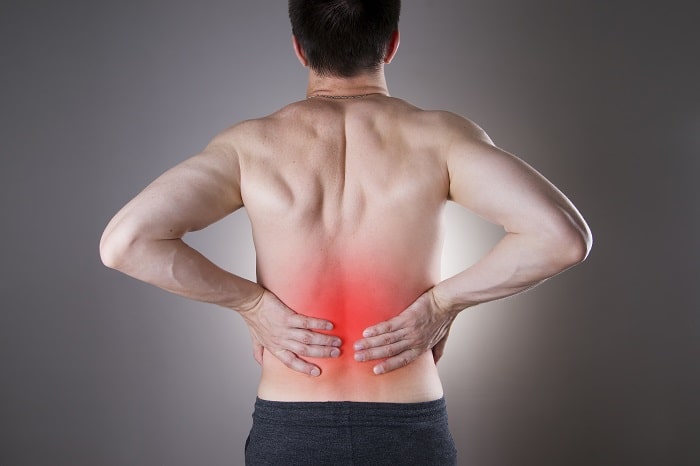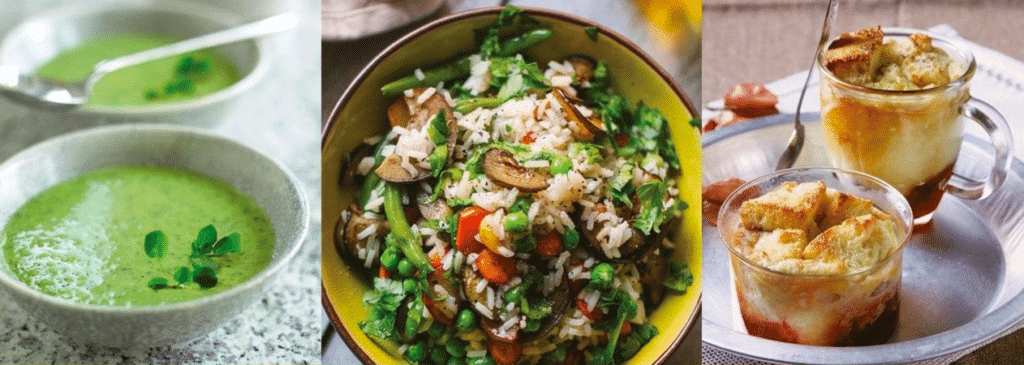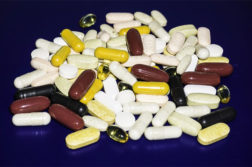
Editor Rating
- Rated 5 stars
- Spectacular
- The Renal Diet
- Reviewed by:
- Published on:
- Last modified:
- Value for Money
- Effectiveness
More than 661,000 Americans have kidney failure, and in 2013, over 47,000 died from kidney disease. Those facts come from the National Institute of Diabetes and Digestive and Kidney Diseases (NIDDK), which tracks statistics related to kidney health. Thankfully, there are steps you can take to reduce your risk of developing chronic kidney disease.
What Is A Renal Diet?
This diet focuses on your kidneys’ needs and is a relatively simple lifestyle change that helps many people avoid dialysis and improve their health without drugs. Whether you have dealt with kidney disease for a long time or are newly diagnosed, adopting a healthy diet can improve your quality of life.
Other terms often used to define this diet include: Kidney Diet or Dialysis Diet (Davita)
How Does a Renal Diet Work?
Depending on the severity of existing kidney problems, adapting your lifestyle may help your kidneys function better. Some people experience a complete recovery from kidney disease, while others may struggle to keep symptoms at bay.
Regardless of the cause, kidney disease means that the organs cannot filter blood the way they should, allowing toxins and other waste to build up in your bloodstream. People who are in later stages of renal failure may need to undergo dialysis to combat severe kidney damage.
The American Kidney Fund defines the renal diet as a kidney-friendly meal plan which limits certain minerals and fluids. This aims to avoid buildup of waste and fluid, although the effectiveness of the diet closely correlates with the severity of your symptoms.
Consuming foods that are low in minerals like potassium, salt, and phosphorus let your kidneys rest, catering to their impaired ability to filter toxins. Without an influx of difficult-to-digest materials, your kidneys get a break from their daily work.
Is a Renal Diet Safe?
Following a renal diet menu is often the first step your health provider will recommend when combating kidney disease. Working closely with a dietician and other medical professionals will help you maintain a balanced and healthy diet that works with your body, not against it.
You might consider taking multivitamins at the recommendation of your doctor or based on blood test results. However, some vitamins and supplements, or other over-the-counter medications, can worsen your condition. Be sure to discuss these with your doctor.
You’ll also need to consider pre-existing conditions such as diabetes and heart disease. Maintaining proper blood sugar is just as vital to kidney function as consuming the proper diet. People with diabetes may experience kidney problems as a direct result of the disease.
Patients with cardiovascular conditions will also need to focus on low-fat and heart-friendly foods, in addition to switching to a kidney disease diet. However, people in general benefit from a low-fat diet with lots of fruits and vegetables. The key to helping kidney function is choosing the right fruits and vegetables.
In conjunction with eating the right foods, you may also need to limit liquids per your doctor’s orders. Many people with kidney disease also experience fluid retention. Based on your current condition and treatment plan, your doctor will tell you how much water and other liquid you should consume.
Overall, this type of diet is safe for patients who follow the recommendations under the guidance of medical professionals. Still, some people require immediate medical assistance that will not be able to improve their condition through diet alone.
*That said, this one method discovered by a Medical Researcher, 2nd Generation Naturopath and Kidney Disease Expert has been proven to help thousands improve kidney function.
Renal Diet Basics
The American Kidney Fund suggests a balanced diet that balances calories, protein, healthy fats, and carbohydrates. Calorie requirements vary on activity level, weight, age, and body composition. However, protein is vital to all body processes, so most individuals need fairly high levels. Excessive amounts of protein can lead to kidney stones.
Healthy fats give you energy and can help reduce cholesterol. They can also help you gain healthy weight if necessary. Unhealthy fats are found in processed and fast food items and should not be part of a daily diet.
Finally, carbohydrates are what your body converts into sugar for fuel. Most people can successfully break down carbohydrates. People with diabetes or pre-diabetic conditions need to keep an eye on carbohydrate intake, however, because their bodies do not produce adequate insulin to manage the carbohydrates on their own.
Like any health-conscious dieter, you will still want to focus on portion sizes. Simply because a food is low in carbohydrates and high in healthy fats doesn’t mean you should consume more than one or two servings per day.
Portion control is essential to the success of any diet as well as an overall healthy lifestyle. Variety also helps many people to stick to a diet, so we list diet-appropriate foods here to jump start your progress toward kidney health.
The main guidelines are to consume foods low in phosphorus, protein, and sodium.
Who Should Follow a Kidney Disease Diet
A healthy kidney diet benefits more than just people who are experiencing serious kidney problems. Because the diet focuses on healthy portions, balanced nutrients, and low sodium, this diet can benefit many people who have other health issues along with kidney disease.
People With Kidney Disease
Obviously, people with kidney disease stand to benefit the most from this type of diet. For those who are in the early stages of kidney disease, strictly following the proper diet may reverse kidney failure. Many people can recover from kidney disease and go on to retain normal kidney function.
The Mayo Clinic notes that symptoms of acute kidney failure can include:
- Decreased urine output
- Fluid retention and swelling
- Drowsiness
- Shortness of breath
- Fatigue
- Confusion
- Nausea
- Seizures or coma
- Chest pain or pressure
However, it’s important to avoid self-diagnosis, because many of these symptoms also indicate the existence of other health conditions. If you have any signs of kidney failure, visit with your doctor for lab tests before jumping into a new diet plan.
Other causes of kidney failure are impaired blood flow to your kidneys, physical damage (including from other diseases like lupus), or urine blockage. Mayo Clinic also lists diabetes, peripheral artery disease, heart failure, and liver diseases as other risk factors for kidney problems.
People With Diabetes
According to the Dialysis Patients Citizens Education Center, 37% of patients with end-stage renal disease also have diabetes. Even diabetes alone wreaks havoc on the kidneys since high blood sugar damages the blood vessels in those organs. High blood pressure often accompanies diabetes. This is another risk factor for your kidneys.
On its own, diabetes requires individuals to monitor their blood sugar and manage carbohydrate intake. Depending on the severity of their diabetes, many patients require either insulin injections or other medicinal intervention to maintain healthy blood glucose levels. Exercise also helps maintain glucose levels.
In combination with diabetes, dealing with kidney disease can be intimidating. Luckily, many renal diet foods also cater to people who must pay close attention to carbohydrate consumption. Overall, low sodium is the healthiest approach for both conditions.
Carbohydrate counting or meal plan exchanges can help you manage your diabetes while also adhering to the principles of the kidney-friendly diet. Some evidence suggests that low-carb diets can help people lose weight, even apart from medical conditions.
Closely following your prescribed diet plan will help your blood sugar remain stable and also help promote healthy kidney function.
VIDEO: How this proven, all-natural solution is helping thousands of people lower creatinine levels, improve Kidney function, and safeguard their Kidneys from further damage —-> Watch Video <—-
Minerals To Monitor
Consuming too many minerals makes your kidneys work harder at filtering out toxins. Therefore, the kidney diet recommends lowering your consumption of three main minerals which put additional strain on your kidneys.
Sodium
Salt exists in nearly every food, so it can be difficult to avoid. Not only does sodium add to your kidneys’ workload, but it also makes it harder for your heart to pump blood at full capacity. Plus, eating too much sodium causes your body to retain water and become swollen. Salt also makes you thirsty!
To avoid consuming too much salt, opt out of adding table salt when cooking. Use fresh or jar herbs, salt-free spice blends, and flavorful additions like garlic and onion. Carefully read labels when purchasing frozen or canned vegetables and look for no added sodium varieties.
Lunch meats and other processed meats are also salty culprits, and many packaged snacks contain tons of sodium as flavoring and a preservative agent. Finally, condiments can also contain salt, so use those sparingly.
Potassium
Potassium is another common mineral that is in plenty of foods, both packaged and fresh. The right balance of potassium is vital to your body’s muscle functions, but too much overwhelms your kidneys. Still, to know your body’s specific need for potassium, it’s important to undergo blood testing and go over the results with your doctor and dietician.
The problem with potassium is that it naturally exists in many foods like fruits and vegetables. It’s also an ingredient in many bread products. Plus, many products that are low in salt have additional potassium in its place. This is yet another reason to read labels closely. Drinks such as fruit juices can be consumed as long as they are low in potassium and in moderation.
One help for too much potassium is medication that helps your body expel extra. Potassium binder is a powder that you mix with water and drink. It does require a prescription and careful guidance to ensure you maintain the correct level of potassium in your body.
Phosphorus
Phosphorus is another mineral that exists in nearly every food and partners with calcium and vitamin D for bone health. But phosphorus buildup makes bones weak, leaving you at risk for experiencing painful fractures or breaks.
Similar to the remedy for an oversupply of potassium, a different binder medication reduces the amount of phosphorus in your body. Again, not all people with kidney disease require a prescription, but your lab results will show what your levels are of each mineral so you can monitor as needed.
In general, doctors prescribe binder medications for people with advanced kidney disease, so if you have just discovered that you have kidney problems, diet alone may be enough to treat your condition.
Renal Diet Foods

Foods that are overall low in sodium, potassium, and phosphorus are top items on the approved food list.
Apples
Apples are low in potassium but contain antioxidants, flavonoids, and fiber. They’re also a great source of vitamin C.
Grapes
In addition to their relatively low carbohydrate content, both green and red grapes are low in potassium.
Berries
Plentiful in both vitamin C and fiber, berries do contain small amounts of potassium. They also provide antioxidants.
Cauliflower
Another low potassium food that’s rich in vitamin C, cauliflower packs protein and fiber too. It also contains vitamin B6, whose family of vitamins helps your body re-energize.
Onions
Onions are more than flavorful ingredients in many dishes. They’re also low in carbohydrates and add flavor without salt or additives.
Summer Squash
Compared to its winter counterpart, summer squash contains significantly less potassium. A 100g serving of summer squash contains about 7% of the daily value of potassium. Winter squash contains about 10%.
Lettuce
Enjoying salads is great for losing or maintaining weight, but having your greens also adds vitamin A to your diet without a whole lot of sodium, potassium, or phosphorus.
White breads
Italian, French, and sourdough bread, plus flour tortillas and pitas, contain less potassium and phosphorus than whole-grain bread.
Beef & Chicken
Fresh beef and chicken from the grocery store are typically free of added sodium (although reading labels is a must). Look for low-fat cuts of beef.
White Rice and Corn
Plain white rice without added salt plus rice or corn cereals are your best bet for keeping phosphorus low.
Unsalted Popcorn
Unsalted popcorn makes a great treat for anyone on a renal diet, but it’s also a low carb treat for people with diabetes.
Sugar Cookies, Shortbread Cookies, Vanilla Wafers, Sherbet
According to Winchester Hospital, these are acceptable desserts for those on the Renal Diet. For other dessert options, check with a certified nutritionist or approved Renal Diet cookbook.
Related post: Iaso Tea Benefits And Detox Results: Are They Too Good To Be True?
Foods to Avoid with Kidney Disease
Foods that are high in sodium, potassium, phosphorus, and fat are not healthy components of a diet for kidney disease. Here are foods to avoid with kidney disease.
Cantaloupe
A one-cup serving of cantaloupe contains over 10% of the recommended daily value of potassium, making it a poor choice for renal dieters.
Mangos
A single cup of mango, or roughly one-third of a fruit, contains about 7% of your daily potassium allowance.
Kiwi
A single kiwi, at about 2” diameter, adds 215mg of potassium to your diet- that’s about 6% of the recommended daily allowance for normal diets.
Oranges & Other Citrus
While an ideal source of vitamin C, oranges, and other citrus fruits have over 300mg of potassium per cup of fruit. Juice cleanses should be avoided if you have kidney disease.
Pomegranate
While pomegranate has a reputation for its heart-healthy antioxidants, a slight half cup of arils (seeds) has 205mg of potassium. A cup of pomegranate juice ranks at nearly 15% of the recommended daily value of potassium.
Okra
This bitter vegetable has high levels of both potassium and phosphorus, making it difficult for your kidneys to handle its byproducts.
Spinach
Compared to lettuce, spinach has substantially more potassium per cup.
Potatoes
A cup of potatoes is a hefty addition to your diet both in terms of carbohydrates (26g) and minerals. Potassium levels in a one-cup serving reach nearly 20% of your daily value. Potato chips and fries also fall under the “avoid” label.
Artichokes
100g of artichokes marks 10% RDA of potassium, making this vegetable a no-no for kidney patients.
Tomatoes
High potassium is a negative for fresh tomatoes, but canned tomatoes often contain additional salt that makes them unsuitable for this diet.
Bacon
A single slice of bacon contains about 137mg of sodium, 5% of the RDA, so unless you can limit yourself to one slice, this meat is off the table.
Processed Meats
Hot dogs, deli lunch meats, and pepperoni all contribute a huge amount of sodium and preservatives to your diet.
Nuts & Sunflower Seeds
While rich in healthy fats, nuts and sunflower seeds are high in phosphorus. Sunflower seeds are also chock full of potassium. One cup (with hulls on) yields 8% of the RDA of potassium.
Whole Wheat & Whole Grain Bread
Whole-grain bread and whole wheat baked goods all feature lots of phosphorus. They can also contain high levels of sodium depending on the recipe.
Bran Cereals
While heart-healthy in general, bran cereals and oatmeal have high phosphorus content.
Beans
Most varieties of beans, whether baked, black, pinto, or other are high in potassium. For example, one cup of black beans packs a whopping 2760mg of potassium.
Bananas
A single banana will take up 12% of your daily potassium allowance, plus bananas are high in carbohydrates for those who monitor blood sugar.
Winter Squash
Winter squash has a higher potassium content than summer squash, although its phosphorus content only slightly surpasses summer varieties.
Avocados
Milk
More Restrictions found here: https://www.nutritioncaresystems.com/renal-diet-restrictions/
Other Foods for General Kidney Health
Apart from the foods above, other foods help people with damaged kidneys to keep their nutrient levels stable. These foods are also healthy for people not strictly sticking to a kidney-friendly diet.
Lean Meats
Eating lean meat adds protein to your diet without a lot of fat. Low-fat protein sources are a key component of any healthy diet.
Eggs (or Egg Whites)
Eggs are quality protein sources that are low in phosphorus and potassium. However, an entire egg is high in cholesterol, so many heart-conscious dieters prefer to consume egg whites instead.
Garlic
One clove of garlic adds a negligible amount of carbohydrates, potassium, and phosphorus to your meal, but it packs a flavorful punch. It may also help cleanse your bladder and kidneys.
Additional Information About The Renal Diet
If you are interested in learning more about the kidney diet, here are some resources for you to check out.
The All-Natural Kidney Disease Solution – Learn more here (Currently can try risk free for 60 days)
Renal Diet recipes: https://www.nwkidney.org/living-with-kidney-disease/recipes/
Case Study pdf: https://renalnutrition.org/files/archives/RNF_Vol34_No2_2015_case_study.pdf
Sample Plans and Meals: https://www.diabetesselfmanagement.com/managing-diabetes/complications-prevention/kidney-disease/sample-renal-meal-plan/
*It is important to consult a renal dietician if you are undergoing hemodialysis or have kidney disease.
If you do not have a kidney disease but are looking for healthy, effective diets to lose weight check out this list of top diets for health and weight loss.
Click Below to Get The Best Price on The Renal Diet
Summary: Foods high in sodium, potassium, phosphorus, and fat are unhealthy components of a diet for kidney disease. Learn how you can lower your risk for the disease here with our renal diet review.




